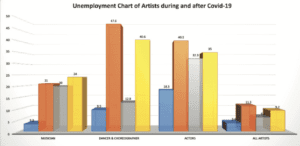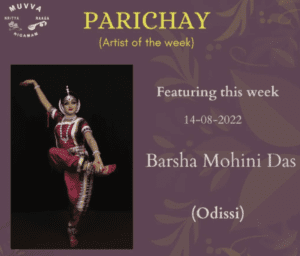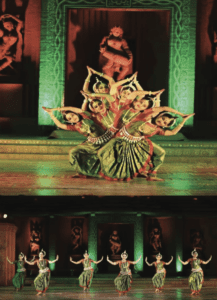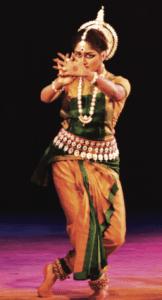Abstract
To be an artist is to believe in life. However, artists from around the world failed to live by this truth when the covid-19 pandemic hit the earth in the year 2019. The deadly virus snatched away the livelihood of many artists, leaving many to the fate of time in the years to come. Though the situation now has much improved than it used to be during the early advent of the virus, the artist community is still struggling to relive the glorious days of the past.
A majority of artists still count on on-stage performances to earn their bread and butter. They have not yet been psychologically and/ or financially prepared to switch to online platforms. On the other hand, for the audience, switching to digital platforms for the daily dose of entertainment has become a new normal. This has led to fewer stage shows, loss of opportunities, a higher rate of unemployment, and a high rate of stress and anxiety amongst the artist community.
This article has tried to touch upon various pain points of the artist community, in general, around the world, backed by numerous statistics and data secured from verified online resources. The aim is to create an acknowledgement of the fact that the artist community is in desperate need of a friendly push, now more than ever, to be able to retain its healthy contribution to society, like it used to be before the pandemic.
Introduction
The covid-19 pandemic has hugely impacted performance artists and the entertainment industry. Events were cancelled, productions were shut down, theatres were closed, and millions of people were in lockdown. This leads to a debilitating psychological and financial crisis, mostly among small-scale actors, performance artists and struggling actors. Lack of work and inadequate income has led many artists to find alternate means of income with massive migration of performance artists from offline events to online platforms.
We asked artists and accumulated some essential data to understand the shift in art careers, how it has affected their careers and what plans they have for the future. We have discovered various similarities among artists regarding their struggle and the financial loss they have faced and still facing due to delayed workshops, cancelled openings, loss from sales, and lack of adequate work. Some are planning to move their careers online, and some have already moved their workshops and creativity to online spaces.

Covid-19 Pandemic: A Disaster for Performing Artists
The Art and Culture industry has experienced significant economic setbacks from covid-19 around the spectrum of artistic and creative endeavour, restrictions on public gatherings, and changes in consumer behaviour, including some of the few factors.
Events were postponed and cancelled, resulting in a massive loss for Indian Art, Artistic galleries and Architecture, performers and organizers. As you can see from the chart, there has been a significant surge in the unemployment rate after the covid-19 pandemic. Dancers, choreographers and actors are the ones who are still suffering after the pandemic.
Various performing artists have complained about a significant shift in pay scale. Things have drastically dire situation as it affects not only the financial condition of artists but also their reputation, thereby hampering their skills and performance as a whole.
The current scenario and the possible future for the Artists
Despite the financial challenges, artists still find a way to keep the art alive. Artists have started migrating to online platforms such as YouTube to broadcast their performances virtually.

Some are recording their performances and uploading them on social media platforms. Some sell their products and performance videos online.

Programs and Incentives through virtual mediums
Artists participate in virtual festivals hosted online, where they get paid for performing online. Online streaming, live sessions, online training, online teaching, sales and videography have become the new income norm in the artist community.
Online events like Guru Kelucharan Mohapatra Dance Festival, Navapallava, Guru Dakshina, Jhulana Utsava and Udaya Raga Dance Series are there for supporting dancers and artists from Odisha.
Nritya Natanam has also conducted live and online dance classes and sessions for kids, artists and students through Google Meet App and video calls.
Covid pandemic: Global impact on the entertainment industry
Global revenue dropped
Reports by the Motion Picture Association suggest the entire global theatrical and mobile entertainment market in 2020 was $80.8 billion. The figure may look impressive, but it is an 18% drop from 2019, the lowest figure since 2016. In 2019, the theatrical entertainment sector contributed 43% of the global total, which further reduced to 15% in 2020.
A drop in TV shows production
Due to lockdown restrictions, it becomes a huge challenge to produce original scripted TV shows. Only 493, compared to 532 in 2019, scripted US TV programs were released in 2020. Due to delays, shows meant to film in 2020 were pushed to the future. Lack of budget also forced several producers to drop their projects, leading to a cascading effect of financial losses across the whole artistic and entertainment community.
Fewer movies were released
Several movie projects were shelved, and the theatrical release of some movies was also cancelled, leading to more losses. The list by Wikipedia mentions all the movies whose theatrical releases have been cancelled or moved to alternate modes of release or movies whose release date has been delayed due to Covid.

The uncertainty of covid-19 waves has also impacted the financial stability of theatre owners as most of the investment went into renovating the cinema halls after years of lack of operation.
A massive loss in box office
For decades the annual movie attendance has remained at a billion, which drops to 240 million for the entire year of 2020.
A rise in the digital sector
Aside from the financial downfall, one silver lining is the rise of streaming and on-demand platforms allowing consumers to access content online. Digital entertainment, on the other hand, went for an upward trend, i.e. to $61.8 billion in 2020.
Less stage shows
Artists, those who breathe art on stage, such as odissi dancers, are getting less signups than the pre- covid time.
Covid impact in Indian entertainment industry
The performance artists, actors, daily wagers and staff took the biggest hit since events, production and shooting were shut down abruptly.
Even after the lockdown, the social distancing code was still in effect, with strict safe-distancing rules. Theatres and events had to leave seats empty as preventive measures. As a result, even after the lockdown, the situation was still insufficient to reinstate the sector to its glory.
Ronnie Screwvala’s highly anticipated sci-fi project. ‘Ashwathama’ was delayed due to exceeding the budget of 200cr INR, which did not seems viable with the uncertainty caused by Covid-19. Even dropping the budget to 125cr INR and releasing it on a digital platform could not recover a factor of the movie’s cost, as Ronnie Screwvala reported.
The impact of the pandemic on the Indian entertainment industry led to lowered attendance at movie theatres, film festivals, and music concerts, disruption in film distribution, cancelled releases and abrupt curtailment of on-location film shoots. The financial ramifications were passed on to production houses, The negative impact of the coronavirus outbreak has also impacted the arts and entertainment industry in India. With nationwide lockdowns, prohibition on public gatherings and cancellation of cinemas, music festivals have taken a toll on the life of people associated with the arts and entertainment industry.
The sudden shutdown of theatres immediately hit the Indian movie industry. Major releases were delayed, projects in post-production were put on hold, and several projects in line.

Fig 6: 35th Konark Dance and Music Festival in 2021 by Konark Natya Mandapa
While Tollywood, Kollywood, Mollywood, and sandalwood are seeing a decent recovery, even giants like Bollywood are still struggling to bring audiences back to the theatre.
Financial losses due to covid-19 pandemic
According to annual reports by Ernst and Young, the total revenue for India’s media and entertainment industry, including sectors like film, TV, music, print, and animation, among others, fell by 24 per cent in 2020 to $18.7 billion compared to $24.7 billion in 2019.
The total revenue of the television industry fell to $9.3 billion from $10 billion in 2019. However, the digital platform saw a boom jumping from $384 million to $575 million.
The worst affected are small regional movie industries like Ollywood. Similarly, industry insiders from the Odia film industry of India have suffered the worst as the aftereffects of covid-19 are still viscerally prominent.
Only 26 Odia movies were released from 2020-2022, but none completed a week in theatres, resulting in a significant downfall in the box office collection. This leads to theatre owners depending on Hollywood and Bollywood movies.
Cancellation of movie releases and artistic events has led to many problems, such as potential refunds, contractual obligations, and exchanges to interested parties like broadcasters, event organisers, ticket holders, and sponsors who had committed a large sum of money that was rarely recovered.
Reduced Payment
Before pandemic, talented artists used to experience the full joy of performing in front of a gallery full of audience. The loss of stage shows coupled with restricted gatherings in permitted cultural events has significantly impacted the paycheque of artists. With production, distribution and event organisation at a standstill, many artists have to work at a reduced pay, unlike other sectors such as software industries.

Fig 7: Odishi Dance by Barsha Mohini Das
Loss of Life
Not only financially, but India also lost several esteemed artists to covid-19, including legendary singer Lata Mangeskar, music composer Wajid Khan, S. P. Balasubrahmanyam, and music director Santiraj Khosla, sculptor Raghunath Mohapatra, Amarendra Mohanty to name a few.
Prateek Raja, the co-founder of the experimenter Gallery in Kolkata, describes the situation as heartbreaking, inhuman and shameful. “’Several of our artists and their families have tested positive, and we are in touch with them in trying to help them through their quarantine periods in their cities of domicile”, he adds.
Aparajita Jain, co-director of Nature Morte in New Delhi, said the situation is ‘like war’.
‘Six of my artists have had Covid. Sixty percent of my staff have Covid or have family that are severely sick,’ she said. ‘At a moment like this, it feels tonedeaf to tell them to think about art and work.’
Conclusion
Undoubtedly the shadow of the covid-19 is still lingering, but the condition of the arts and entertainment industry has been improving. Cinemas are open again, events are getting organised, and artists have found a new way of income in the online space.
However, with the uncertain nature of Covid cases, the art and entertainment community still lacks a plan and provision to endure one more lockdown. There was no financial backup or job security during the initial lockdown stage, and the situation is still the same, if not worse.
The big companies and organisations, including production houses, production companies, broadcasters, theatres, licensors, distributors and promoters, have legal options and safety nets like business interruption coverage to soften the blow. However, the same cannot be said for independent artists whose livelihood depends on a contractual basis. More robust policies and amendments in existing contract performance are also needed to tackle the complexities of contractual obligation laws and make them more favourable towards struggling artists.
References
Barsha Mohini Das. Devi katayani mantra. [Online]. Available: Devi Kalyani Mantra
Barsha Mohini Das. Odissi Dance performance by Barsha Mohini Das in Jhulana Utsava. [Online]. Available: Jhulana Utsav 2021 | Trailer: Day 1 | Konark Natya Mandap.
Barsha Mohini Das. Odissi Dance performance by Barsha Mohini Das in Udayaraag Dance Series. [Online]. Available: Odissi Dance performance by Barsha Mohini Das in Udayaraag Dance Series.
Brad Adgate (April 2021). The Impact COVID-19 Had On The Entertainment
Industry In 2020. [Online]. Available: The Impact COVID-19 Had On The Entertainment Industry In 2020 (forbes. com)
Jim Curry (September 2022). A Look Ahead at Profit Participation Litigation. [Online]. Available: A Look Ahead at Profit Participation Litigation | Loeb & Loeb LLP
Ravina Grewal Rajpal and Nishat Ali (January 2021). Pandemic’s Effect On The Media & Entertainment Industry: A Legal Perspective. [Online]. Available: Pandemic’s Effect On The Media & Entertainment Industry: A Legal Perspective – Music and the Arts – India (mondaq.com)
Nyay Bhushan (May 2021). How India’s COVID-19 Crisis Is Devastating the Local Entertainment Sector. [Online]. Available: How India’s COVID Crisis Is Devastating Entertainment Sector – The Hollywood Reporter
Sam Gaskin (May 2021). Indian Artists and Galleries Respond to Covid-19 Nightmare. [Online]. Available: Indian Artists and Galleries Respond to Covid-19 Nightmare | Ocula News
OB Bureau (May 2021). Vanishing Stars: Odisha Artists Who Died During COVID Second Wave. [Online]. Available: Vanishing Stars: Odisha Artists Who Died During COVID Second Wave – odishabytes
Lata Jha (August 2022). South films regain 80% of pre-covid biz. [Online]. Available: South films regain 80% of pre-covid biz | Mint (livemint.com)

Barsha Mohini Das
Indian Classical Dancer, Actress, Finance Govt India
https://doi.org/10.57259/GRJB6752
Bio
Barsha Mohini Das is an Honest Portrait Artist (Indian Classical dancer Odissi). She is Mrs kalinga Sundari 2022, an actress and influencer. She is a Government employee in the Finance department of the Government of Odisha. Barsha Mohini Das is Miss Rajo queen 2013 and Mrs India universe 2022 (1st runner up) by Glam Guidance.
Objectives
Impact of covid 19 on Artist which ruined their livelihood during this period how they can’t live without their Artlife and day by day they are in search of their income source online and offline mode.

